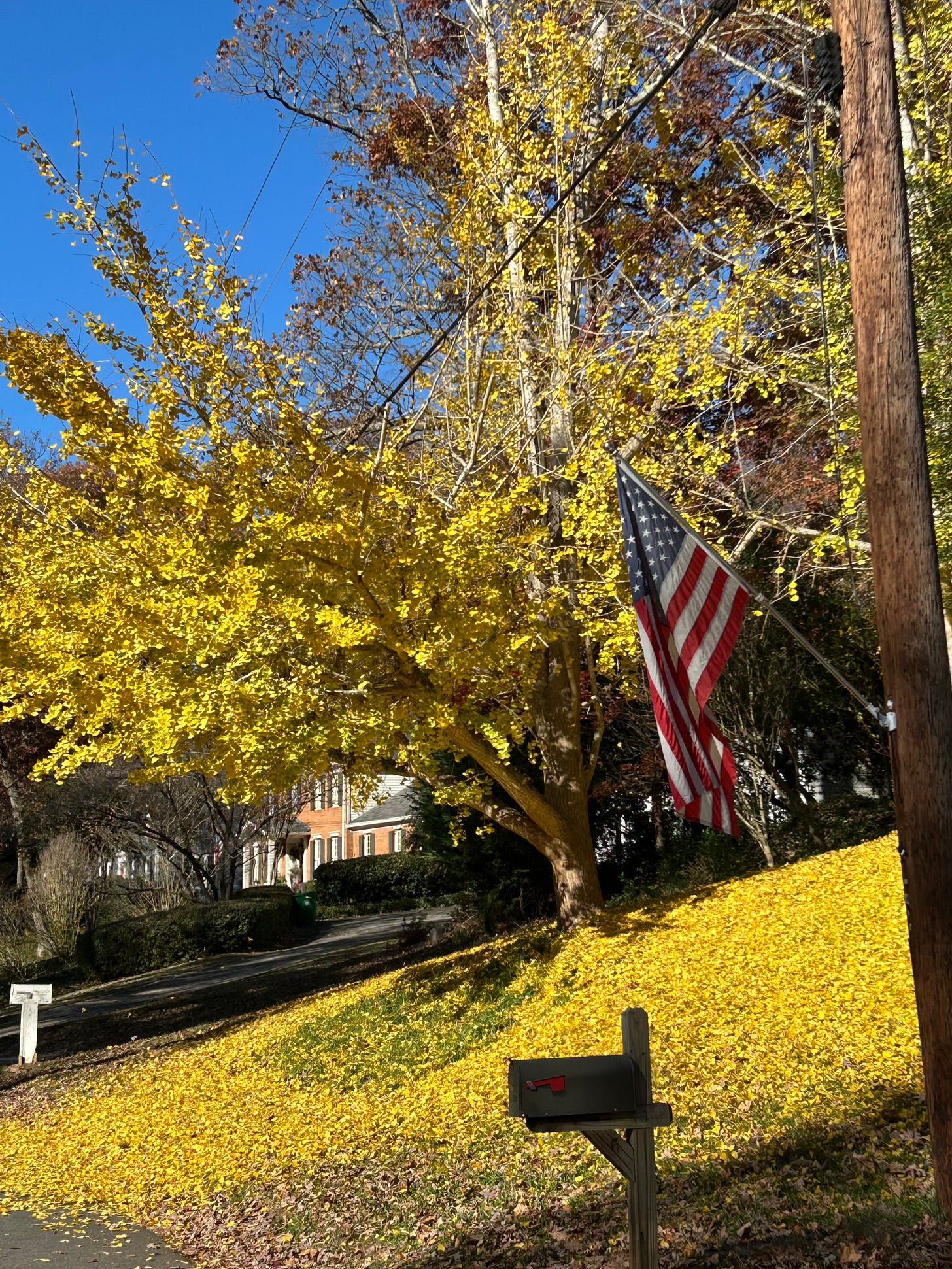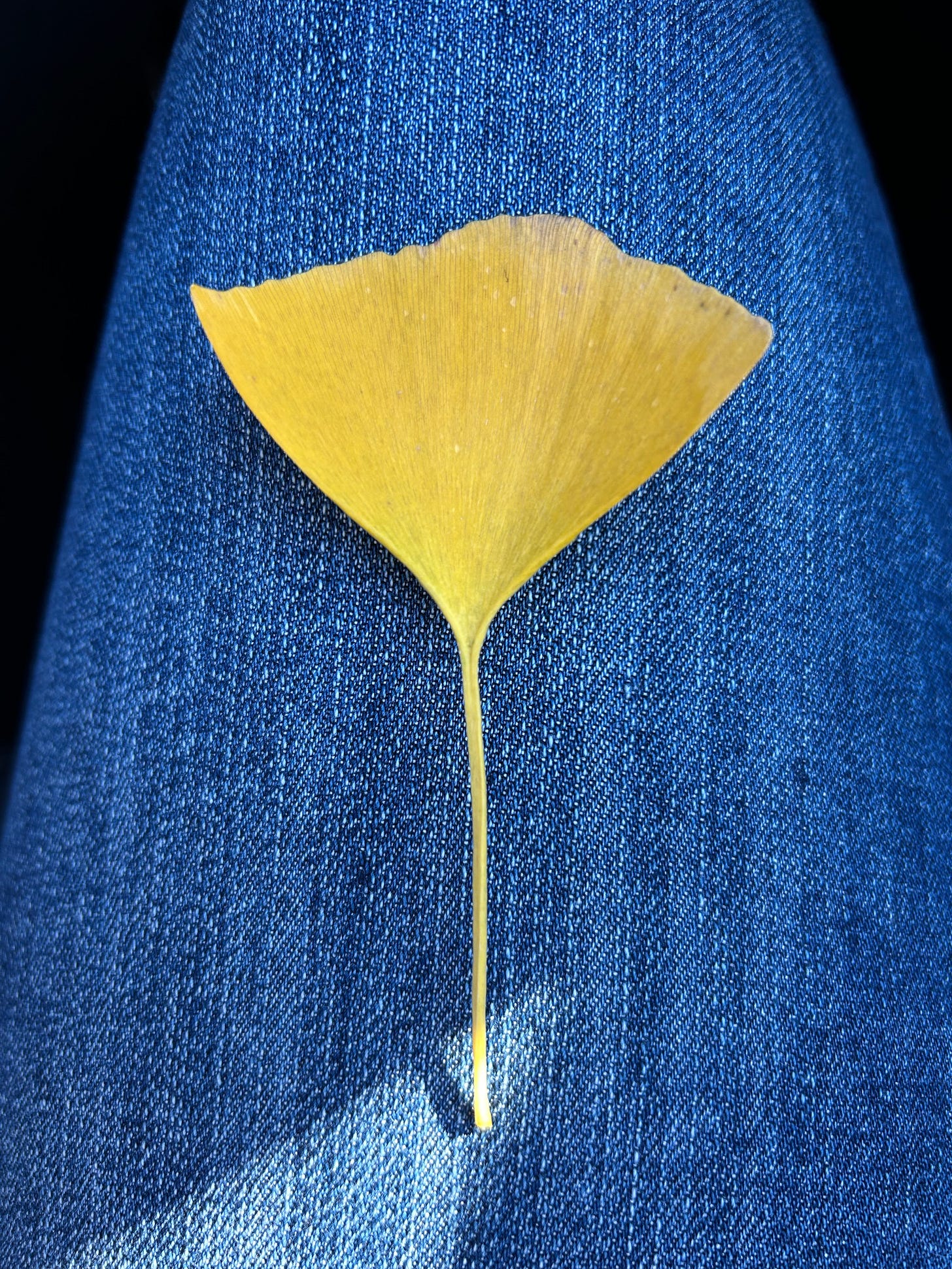As I was driving through a neighborhood recently, I was captivated by a glorious tree. Since it is early December, most trees have shed their leaves. This tree, however, was adorned with bright goldenrod-colored leaves, which on that particular day stood out against a brilliant azure sky. There was also a carpet of leaves littering the ground below. It took my breath away.
We continued on when I suddenly asked my husband if we could loop back through the neighborhood. I wanted to take a photograph of this tree in order to determine its name and also get a closer peek. I knew if I didn’t, I would be thinking about this tree and kicking myself for not circling back. He graciously obliged me as evidenced by the photo below.
After taking a few photos, I knelt down to pick up a leaf. Examining it more closely, I saw that the leaves were shaped like delicate fans. Upon further scrutiny, I noticed tiny vertical lines gracing their fragile surface. The leaves were soft and velvety to the touch. An online search led me to its name - a Ginkgo tree. I have heard of the Gingko, but here in Atlanta where maples, dogwoods, and other deciduous trees are more prevalent, I don’t believe I’ve seen one. Perhaps during winter months when the Ginkgo is bare, or during the spring and summer months when the leaves are a simple green, I hadn’t given this tree a second glance.
The sight of this yellow beauty, with its carpet of leaves below, literally had me stopping in my tracks. The Nashville Tree Conservation Corps describes perfectly what I had just witnessed - “In the fall, Ginkgos lose all their leaves suddenly, at the same time, with the beautiful fan-shaped leaves collecting in yellow carpets beneath the trees.”1 The website even cites a beautiful poem written about Ginkgos by Howard Nemerov called “The Consent”. 2
This week, I have had some time to do a bit more research about the Ginkgo. I was amazed to learn that the Ginkgo more than likely predates dinosaurs and may have originated during the Paleozoic Era. Ginkgo trees withstood the bombing of Hiroshima, one of the only living things to do so, during World War II. This is one of the many reasons Ginkgo trees are prevalent within temple and shrine grounds throughout Japan, where they are highly revered and often referred to as living fossils due to their age and longevity.3 They are truly resilient and magnificent!
Have you ever had such an experience when in nature? Has anything you’ve encountered prompted you to undertake research to learn more about what you have seen? I’d love to hear about it - feel free to comment below.





